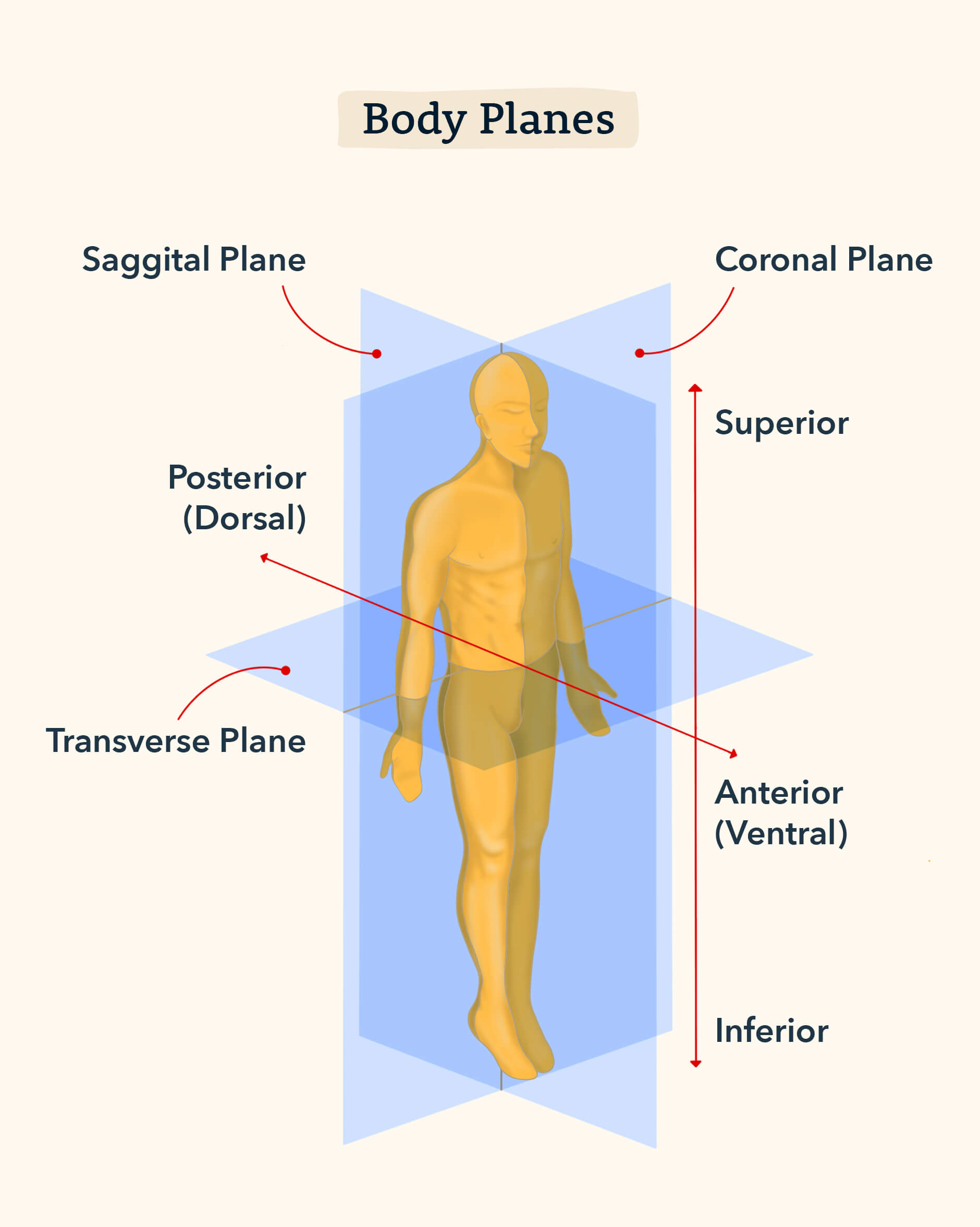Muscles
Muscle Types and Classifications
The human body has three types of muscle tissues: skeletal, cardiac, and smooth.
- Skeletal muscle: These are voluntary muscles attached to the skeleton, aiding in movement. They are striated, meaning they appear banded under a microscope.
- Cardiac muscle: This involuntary muscle is found only in the heart, responsible for pumping blood throughout the body. It’s also striated.
- Smooth muscle: Another involuntary type, smooth muscle is found in hollow organs like the stomach, intestines, and blood vessels. Unlike the others, it’s not striated.
Types of Muscle Contractions and Movements
Muscle contractions can be classified into three primary categories:
- Isometric (static): The muscle generates force without changing length, e.g., holding a plank.
- Isotonic (dynamic): Muscle length changes under a constant load. It includes two sub-types, concentric (muscle shortens) and eccentric (muscle lengthens).
- Isokinetic: The muscle changes length at a constant speed.
Muscle Fiber Types
- Type I fibers (slow-twitch): These are more efficient at using oxygen to generate fuel, making them ideal for endurance activities.
- Type II fibers (fast-twitch): These fibers are better at using anaerobic metabolism to create fuel and are best for short, intense bursts of power.
Reflexive Responses
The Golgi Tendon Organ (GTO) is a proprioceptor that senses changes in muscle tension. In contrast, the myotatic stretch reflex involves the rapid contraction of a muscle in response to its stretch; the muscle spindle regulates it.
Planes of Motion and Movements
The body operates within three planes of motion:
- Sagittal plane: Divides the body into right and left halves. Movements include flexion (bending) and extension (straightening).
- Frontal plane: Divides the body into front and back. Movements include abduction (moving away from the midline) and adduction (moving towards the midline).
- Transverse plane: Divides the body into top and bottom halves. Movements include rotation, pronation, and supination.

Aerobic and Anaerobic Systems
The aerobic system uses oxygen to convert glucose into energy, while the anaerobic system generates energy without oxygen, instead producing lactic acid as a by-product.
Heart Rate, Blood Pressure, Stroke Volume, Cardiac Output, and Hypertension
- Heart Rate (HR) is the number of heartbeats per minute.
- Blood Pressure (BP) is the force exerted by circulating blood against the walls of blood vessels.
- Stroke Volume (SV) is the volume of blood the heart pumps per beat.
- Cardiac Output (Q) is the volume of blood pumped per minute (HR x SV).
- Hypertension is chronically elevated BP.
Delayed Onset Muscle Soreness (DOMS)
DOMS is muscle pain or stiffness experienced 24 to 72 hours after intense or unfamiliar exercise, caused by microscopic damage to muscle fibers during exercise.
Fitness Calculations
Some common fitness calculations include:
- Body Mass Index (BMI): Weight (kg) / Height (m²)
- Maximum Heart Rate (Max HR): 220 – age
- Karvonen Formula: Target HR = ((Max HR – resting HR) × %Intensity) + resting HR
- Waist to Hip Ratio: Waist Circumference / Hip Circumference
- Lean Body Mass (LBM): Total Body Weight – Fat Weight
- Ideal Body Weight (IBW) – Men: 50kg + 2.3kg per inch over 5 feet.
- Ideal Body Weight (IBW) – Women: 45.5kg + 2.3kg per inch over 5 feet.
- Metabolic Equivalent (METs): 1 MET = energy cost of sitting quietly.
Stretching Techniques
- Static: Stretching a muscle to its farthest point and holding it.
- Passive: Using an outside force other than the exerciser’s own muscle to hold a stretch.
- Active: Assuming a position and holding it without assistance.
- Dynamic: Performing controlled, smooth, and deliberate movements through the full range of motion.
- Ballistic: Using momentum to force a limb into an extended range of motion.
- Proprioceptive Neuromuscular Facilitation (PNF): Techniques involve a combination of alternating contractions and stretches.
Maximal and Submaximal Testing
Maximal testing involves assessing an individual’s maximum aerobic capacity (VO2 max), while submaximal testing estimates VO2 max using lower-intensity exercise protocols.
Skinfold Measurements
Skinfold measurement is a common method for determining body fat percentage. This technique uses calipers to pinch and measure the thickness of the skin at various body sites, allowing us to estimate the overall level of subcutaneous fat.
ACSM Sequence of Assessments
In the ACSM Health/Fitness Evaluation, the assessments are typically conducted in the following order: pre-participation health screening, resting heart rate and blood pressure measurements, body composition analysis, cardiorespiratory fitness evaluation, muscular strength and endurance assessments, and finally, flexibility testing. This sequence allows for a comprehensive understanding of an individual’s health and fitness status.
Understanding Calories: Carbs, Proteins, and Fats
Understanding the caloric content of macronutrients is fundamental for fitness and nutrition planning. Carbohydrates and proteins both provide about four calories per gram, while fat is more energy-dense, providing approximately nine calories per gram.
Ketones: The Alternative Energy Source
Ketones are substances that your body produces when it breaks down fat for energy, which happens when your carbohydrate intake is low. This process, known as ketosis, is the foundation of ketogenic diets.
Unit Conversion: Centimeters to Meters
Being familiar with unit conversion, particularly from centimeters to meters, is essential for certain calculations in fitness assessments. Remember, 1 meter equals 100 centimeters.
Impaired Fasting Glucose Levels
Impaired fasting glucose, a pre-diabetic state of hyperglycemia, is characterized by a fasting blood glucose level between 100 and 125 mg/dL. This is a critical marker for potential progression to type 2 diabetes.
Obesity: Understand the Metrics
Obesity is typically defined as a body mass index (BMI) of 30 kg/m² or more. However, waist-hip ratio (WHR) is another valuable measure, with a WHR >0.95 in men and >0.86 in women indicating central obesity and increased health risks.
Claudication: A Warning Sign
Claudication refers to muscle pain or cramping that occurs during physical activity due to inadequate blood flow, often due to peripheral artery disease. As a personal trainer, recognizing these symptoms in clients is critical to preventing serious complications.
LDL and HDL: The “Bad” and the “Good” Cholesterol
Low-density lipoprotein (LDL) and high-density lipoprotein (HDL) are two types of cholesterol. LDL is often referred to as “bad” cholesterol, as high levels, can lead to plaque buildup in the arteries. Conversely, HDL is known as “good” cholesterol because it helps remove other forms of cholesterol from your bloodstream.
Understanding Lipids
Lipids are a group of fats and fat-like substances that serve as energy sources and are important for cell structure and function. They include triglycerides, phospholipids, and sterols (like cholesterol).
Glycogen and Anaerobic Glycolysis
Glycogen, a stored form of glucose in the liver and muscle tissues, serves as an energy reserve for the body. During anaerobic glycolysis, this glycogen is broken down in the absence of oxygen to produce ATP (energy), producing lactic acid.
Types of Training: Circuit, Interval, Pyramid, and Plyometrics
Each of these training methods provides unique benefits:
- Circuit Training involves moving through a series of exercise stations, or “circuits,” which can target strength, cardio, or a mix of both.
- Interval Training alternates periods of high-intensity exercise with recovery periods, effectively burning calories and improving aerobic capacity.
- Pyramid Training uses progressive sets of an exercise, where weight is increased, and repetitions decrease, or vice versa.
- Plyometrics Training focuses on explosive movements to increase power, speed, and strength.
Valsalva Maneuver
The Valsalva Maneuver involves a forceful exhalation against a closed airway, often observed when lifting heavy weights. This can dangerously increase blood pressure and should be avoided during exercise.
Original Borg Scale
The Borg Scale, also known as the Borg Rating of Perceived Exertion (RPE), is a simple method of rating perceived exertion during exercise, running from 6 (no exertion) to 20 (maximum exertion). It aids in monitoring and regulating workout intensity.
Tidal Volume
Tidal volume refers to the amount of air moved into or out of the lungs during a normal breath, typically about 500 milliliters in a healthy adult.
Acute and Chronic Injuries
Acute injuries are sudden and severe, such as a sprain or strain. Chronic injuries occur over time due to repetitive use, leading to conditions like tendonitis or stress fractures.
Hypoglycemia and Hyperglycemia
Hypoglycemia (low blood sugar, <50 mg/dL) and hyperglycemia (high blood sugar, >200 mg/dL) can both lead to serious health issues and must be managed appropriately.
Recognizing Health Conditions
Understanding symptoms of various health conditions is vital:
- Anorexia Nervosa: Severe weight loss, fear of gaining weight, body image distortion, and restricted eating.
- Angina: Chest pain due to reduced blood flow to the heart.
- Hyperthermia: Elevated body temperature due to failed thermoregulation.
- Dehydration: Dry mouth, fatigue, dizziness due to lack of fluid intake or excessive fluid loss.
ACSM Recommendations
The ACSM recommends moderate cardio exercise five days a week or vigorous cardio three days a week, and strength training two or more days a week. The specifics vary based on whether clients are conditioned (regularly exercising) or deconditioned (new or returning to exercise).
Vitamins and Minerals
Vitamins A, D, E, and K are fat-soluble and stored in the body’s fatty tissue and the liver. Minerals like calcium, potassium, and iron are essential for various bodily functions, including bone health, heart function, and oxygen transportation.
Diabetes: Type I and II
Both are chronic conditions that affect how the body regulates blood sugar.
- Type I is an autoimmune condition where the body does not produce insulin.
- In Type II, the body either resists the effects of insulin or doesn’t produce enough insulin to maintain normal glucose levels.
Energy Systems
The body has three energy systems to provide fuel for exercise: the ATP-PC system for immediate power, the anaerobic glycolytic system for short-term power, and the aerobic system for long-term, sustained energy.
Preparing for the ACSM-CPT exam requires a broad understanding of these and other topics. As you continue your studies, remember to review each area thoroughly, practice real-world applications, and apply testing techniques to ensure your success. Keep studying, keep practicing, and your certification will soon be within reach!

